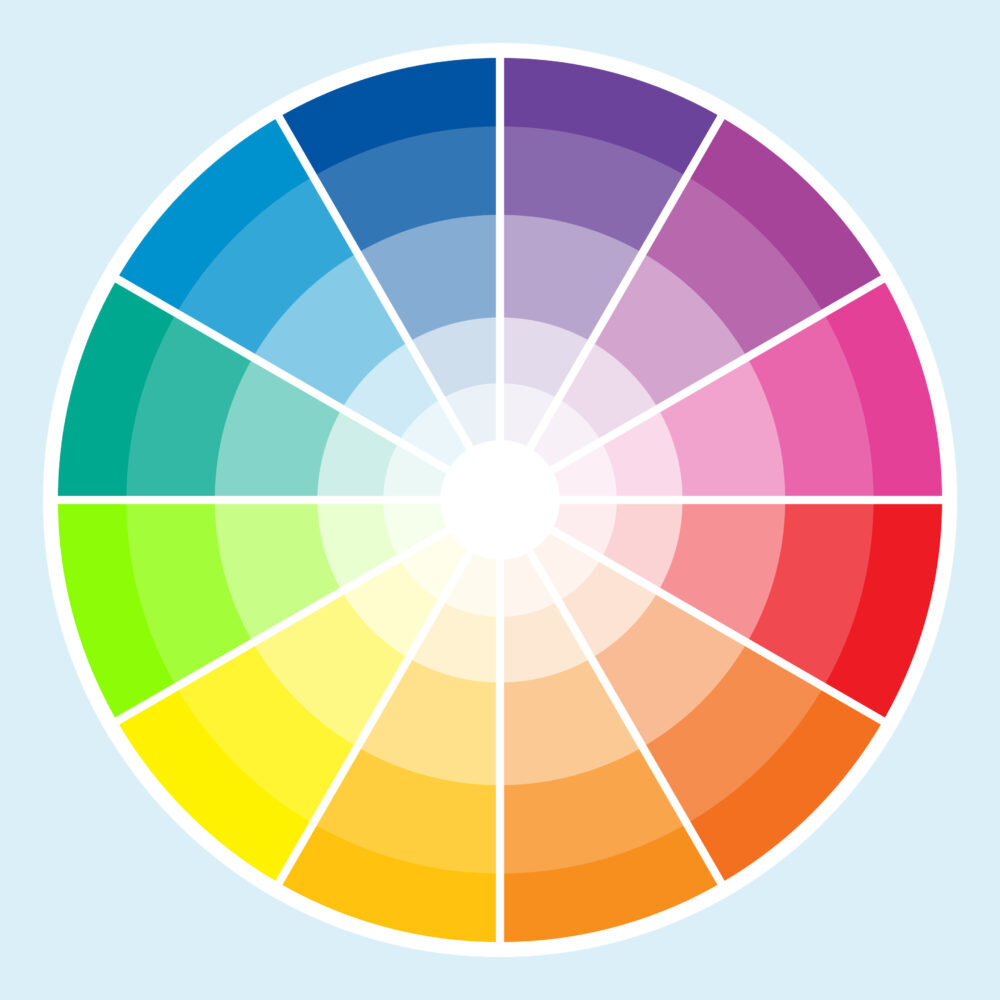When you’re choosing colors for your various embroidery projects, you should know a few technical aspects of color which you may have already learned. It starts with the color wheel.
While we know these aren’t all the colors, every color is represented and is a hue of one of these 12 colors. You’ll use the color wheel to choose the colors in your embroidery to pick colors that work well together. There are a few different types of color combinations, so we’ll outline them to help you see how to use the color wheel for deciding on a color scheme.
Choose Your Embroidery Thread Colors
First, you can use multiple shades of one color to create a monochromatic color scheme. Each color in this scheme is a different shade, or hue, of pink. Because all of those hues would be in the same section of the color wheel, they go well together!
Now if you choose two colors that are directly across from each other on the color wheel, like red and green or purple and yellow, then you have a complementary color scheme. Because of the high contrast between the two colors, the result will be a vibrant embroidery. This color scheme doesn’t work well with text in most cases, it can be harsh on the eyes when you’re trying to read.
If you choose three colors that are right next to each other on the color wheel, like orange, yellow, and green, then you have an analogous color scheme. These schemes are typically more appealing to the eye, and often match with the colors naturally found in nature. When you’re using three colors in your color palette, one is the dominant color while the second color supports and the third is an accent.
If you want to add in another color for more variety, add in a complementary color. Since all three of these colors are at the same spot on the color wheel, you can choose one of the other three colors on the opposite side of the wheel. For instance, a purple or pink would make a great addition to that color palette.
Finally, you can choose three different colors which are an equal distance, or evenly spaced, from one another on the color wheel. Like red, yellow, and blue. In the color wheel above, there are three color sections between red and yellow and blue. These color schemes tend to be vibrant, so varying the hues and shades of each color you use can also create a different tone with the color palette.
Shared from Michelle Queen, of The Embroidery Store





